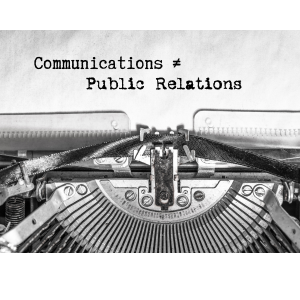The first rule of crisis communications: Do not create a crisis.
Most of the crises or incidents I’ve seen/managed in my career have been of an organization’s own making. A software update was released without proper testing and broke a bunch of things, an executive said something ill-advised, a manager didn’t listen to HR and a disgruntled employee put the company on blast publicly.
By far, the easiest way to manage a crisis is to do all the things to avoid one in the first place. Inevitably, however, organizations will fail rule #1 or be the victim of the rare non-self-induced crisis, so the second rule of crisis communications is also critical: Have a plan.

A clear crisis communications plan – created in advance and updated regularly – is not a ‘nice to have,’ because in a crisis two things are true: One – speed is important and two – emotions are running high. That combination often leads to poor decisions that cause additional damage and keep a team stuck in crisis mode longer than necessary.
A crisis plan includes several elements, tailored to an organization. While I won’t go into all of them here (if you need a crisis plan but don’t know where to start, reach out), basically the plan should cover:
- The Do-ers and Approvers: Who exactly needs to be “in the war room” during a crisis and what are their roles? Keep this number as small as possible for speed, but thorough enough to not cause confusion.
- Audience segments: In the event of a crisis, who are the people who need communication? Pro tips: Be specific. Different customer groups or employee groups are going to need different information. Build the necessary distribution lists or groups in your CRM in advance, or at least know how long it will take to build them and who can do it the fastest. (Clean contact data is critical here so… have that convo sooner than later)
- Channels: Email, in-product, SMS/text message, website, slack, carrier pigeon. Know how to reach each audience segment in multiple ways.
- Templates: While we can’t predict the specifics of a crisis, it helps to template out the basics and get those approved ahead of time. Even if it’s an email design so your team isn’t scrambling with creative or the ‘who to contact’ details. Also, write up some templates for imagined situations. It’s always easier to edit something than start with a blank page.
- Internal SLAs: Decide in advance how often and how frequent your communications should be during a crisis so that all the do-ers and approvers have clear expectations.
Rule #3 – Don’t lie. (Seems obvious, but you’d be surprised)
Egos can run amuck during a crisis because of fear. This will cause people to omit details or sugar coat a situation in communications. It’s very tempting, but don’t do it. People will find out and it will make the situation worse. Work with your communications leader and legal team to strike the balance of transparency and protection.
Rule #4 – Maintain the voice you’ve always had
Nothing will raise suspicion like a company switching to a super formal, corporate, legal-esq tone during a crisis situation. If your company communicates normally in a straightforward voice, keep that. If you’re normally snarky or light hearted, try to maintain a sense of that while adding on a level of seriousness or humility. Be who your customers and employees already know.
Rule #5 – Stay focused on those who are impacted
I could have also called this the “empathy rule,” but this is all about keeping the focus of all communications on fixing any negative impact to stakeholders. It’s easy to say “We broke this, but our amazing team just deployed a fix!” and yes, communicating fixes promptly is important, but what did that break cost your customers? What did the situation mean for your team on a human level? Communicate the facts and the solutions, but don’t leave out the acknowledgement of what the crisis meant for the people impacted by it and how you plan to solve for that too.



Great blog post! Definitely helpful to have a plan in place always.
Your words have the power to make the abstract feel concrete, to bring fleeting thoughts into sharp focus. I’ve read many articles and books in my time, but there’s something about your writing that makes me feel as though I’ve discovered a new way of thinking, a new way of being. You’ve truly unlocked something special in your words.